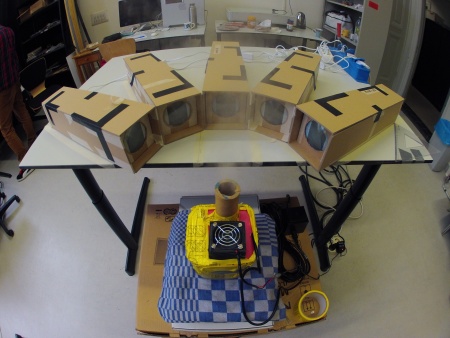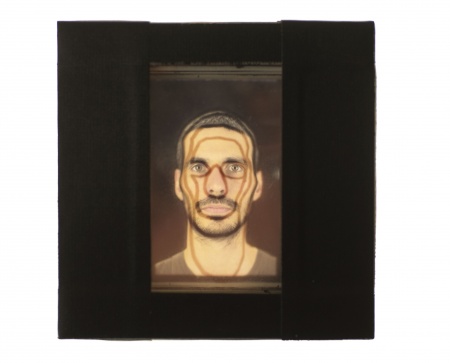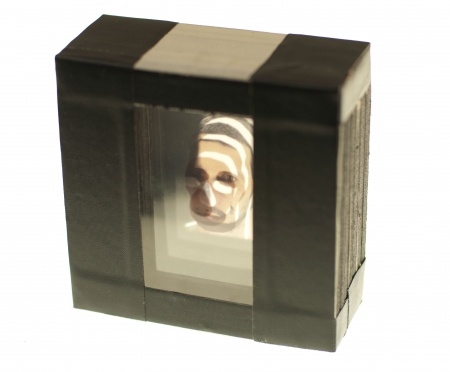User:Tomas Navarro/Graduation
TOMAS NAVARRO, Graduation Project, 2012.
TrueHologram (working title)
Description
True Hologram is a 3d display that forms a photorealistic volume in a high-saturated air medium (mist). True Hologram is a lens-based optical illusion that avoids any solid surface of projection, working exclusively with self-invented methodologies. True Hologram consequently pushes the audience to an extraordinary experience in imaging due to the singularity of its inherent features. The research has been executed as an artistic, intuitive investigation about futuristic screening devices, working exclusively with self-invented methodologies.
Media
Video
Test footage, 24/04/2012 PZI Rotterdam
Download Quicktime H264 version
File:24042012test.mov.zip
Photos
Set up: Multi-angle projection (up to 5 beamers). Ultrasonic humidifier.
Source:multi-layered portrait, prototype.
Source: multilayered portarit, up to 5 angles.
DIYBeamer
Essay
True Hologram is a lens-based and self-invented device that projects a photorealistic volume in a column of cold mist (I'm actually prototyping the device after successful tests). The device gathers DIY methodologies, smart/affordable approaches to 3d imaginery and re-adapted technology in order to achieve a floating volume formed just by casted light and photographic transparencies.
True Hologram is the working title for my final project at the master course Lens-based Digital Media, department of the programme Media Design, Piet Zwart Institute, Rotterdam. The project is the logical response to my concern of what the screenings devices will look like in the incoming years and how we going to deal with the new, 3d-based, and interactive visual technology. Therefore I started to investigate how, through my knowledge and understanding of the photographic/cinematic phenomena, I could offer an unexpected device able to gather those incoming concerns.
Far away from high-tech coordinates I managed to set up a DIY approach to photorealistic light sculpturing. True hologram is based on lenses, light transmission and simple achievements regarding 3d film processing and stereopsis. Holography is the process by which we could record the volume of any subject and then reproduce a 3D photographic representation of it. For many years the medium faced the unavoidable flat medium of screening; the volumetric images were formally a “multilayered photography”, a flat screen able to show different angles of an image and inevitably just an illusion of parallax. Widely defined by futuristic movies the holographic medium is still an unknown place for communication systems. Even if the last high-tech outcomes are able to fully depict a photorealistic 3d volume they cannot be touched; conceptually implies that they are caught in a certain ether or non-natural substance. Consequently I'm proposing a happy-tech device that, through basic re-adapted machinery, brings close to us the 3d displays (which nowadays are culturally still futuristic), using the methodologies of art and design; a hologram that can be touched.
link to PDF (PDF must be uploaded to wiki).
Use Steve's recommendations for abstract length and bibliographic style.
Additional Information
non optional
- One page itemised budget estimate
optional
- Project URL (if lives on an external site)
- extra wiki links (in case you have relevant notes/journals/documentation in your User: page, this is useful particularly if you have been asked to articulate further or refine your project during your assessment)
- Animated GIFs





